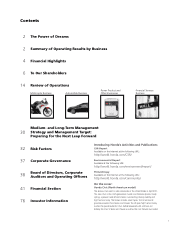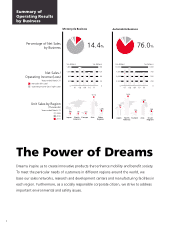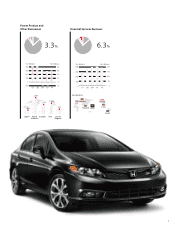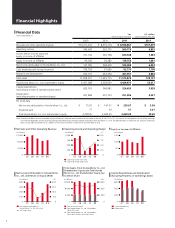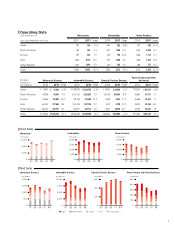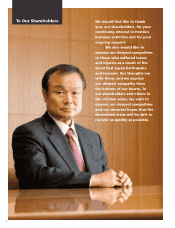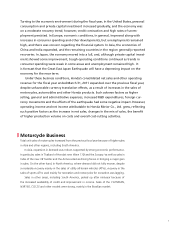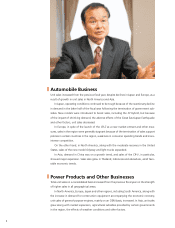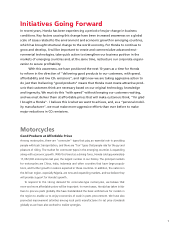Honda 2011 Annual Report Download - page 13
Download and view the complete annual report
Please find page 13 of the 2011 Honda annual report below. You can navigate through the pages in the report by either clicking on the pages listed below, or by using the keyword search tool below to find specific information within the annual report.
Internal Combustion Engine Evolution and the Spread of Hybrids
The current trend in the world automobile market toward more-compact cars with better
fuel economy has been accelerated by the growing awareness of environmental issues
and the instability of oil prices.
As a company providing “personal mobility”, Honda has moved forward with R&D on
a full range of environmental technologies and taken initiatives to reduce the burden on
the natural environment. Among the various alternatives, and this is especially true for
hybrids, we believe that environmental technology will be more valuable if it can appeal
to a wider range of customers. That is why we proceeded with the development of our
lightweight, compact IMA hybrid system, and, following this, have succeeded in offering
vehicles equipped with this system at affordable prices. This hybrid system is now available
on the Insight and CR-Z models, and in October 2011, Honda launched a Fit Hybrid model,
and will continue to work to expand the market penetration of these vehicles.
We believe that hybrid technology will become a mainstay product as one means to re-
duce the burden on the environment. But, we think that people do not just want a hybrid
vehicle, but also a vehicle with competitiveness and performance. In other words, these cars
must be more than just hybrids. They also must have good fuel economy, offer a pleasant
driving experience, and be available at affordable prices. That is why Honda is working to
improve fuel economy by improving both the gasoline engine and battery technology. Also,
with a target date in 2012, Honda will introduce a new lineup of gasoline engines and
transmissions and is working toward the development of medium-sized and larger “plug-
in” hybrid car models that can be recharged using household power outlets.
In addition to these initiatives, Honda is proceeding with the development of a Battery
Electric Vehicle (EV) that will apply technology it has created for a fuel cell electric vehicle
(FCEV). Work is also under way on developing a compact diesel engine for the European
market. The results that Honda has achieved by focusing our corporate resources on ad-
vanced technology will be applied to creating new products in the years ahead.
Strengthening Our Lineup of Small Cars as the World Shifts to Compacts
In response to the worldwide trend toward smaller cars, Honda is working to strengthen
our mini-vehicle lineup in Japan and is moving ahead with the development of a new model
BRIO compact car for Asia that is scheduled to launch in Thailand and India in 2011.
In the mini-vehicle segment, in Japan total new cars sold in 2010 amounted
to about 1.73 million units, while the number of registrated vehicles sold
was about 3.23 million units. Thus, in terms of units, mini-vehicles
accounted for more than 30% of new car sales. Because of issues
related to the rising cost of gasoline, customer demand for
smaller cars is expected to rise, and an important issue will
be how to increase competitiveness in mini-vehicles in the
domestic market.
Automobiles
11


